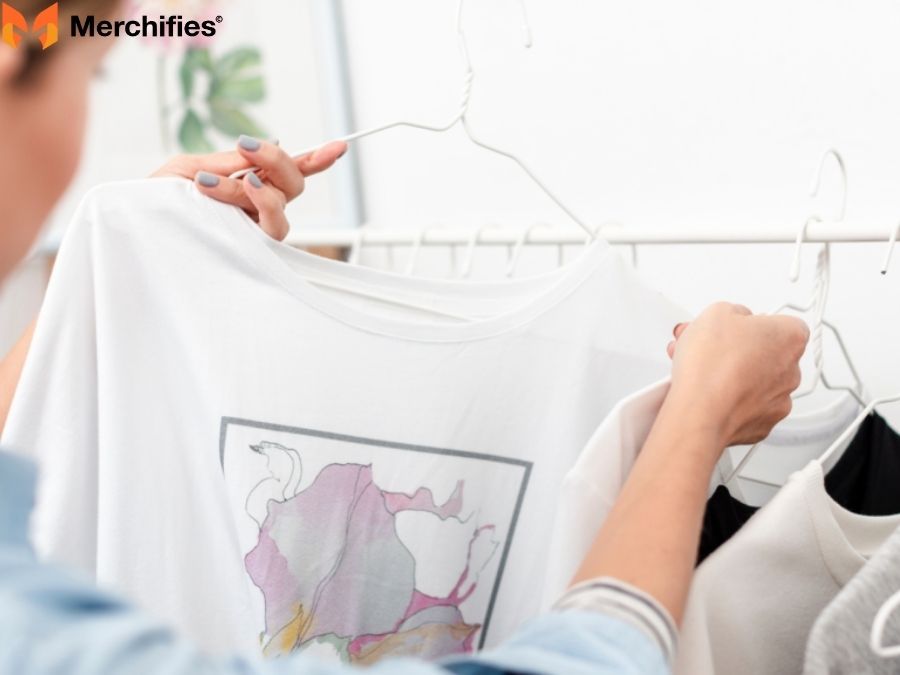How to Care for Your Native American Printed Shirts
Discover the best ways to wash and care for your Native American printed shirts to preserve their colors, symbols, and cultural artistry for years.

Blog Post Contents
Our clothing often tells a story, and perhaps none more profoundly than Native shirts, Native American design shirts, and other forms of Indigenous apparel. These aren't just garments; they are vibrant expressions of cultural heritage, artistry, and tradition. Preserving their beauty and integrity requires a mindful approach to care. In this comprehensive guide, recognized textile expert Evelyn Sage shares her invaluable insights and practical advice on how to wash Native shirts and Native American design shirts to ensure the longevity of your cherished Indigenous apparel. By understanding the unique characteristics of these items, we can honor their history and craftsmanship for years to come.
Understanding Your Indigenous Apparel: Materials and Craftsmanship
Before you even think about cleaning, it's crucial to understand what you're working with. Indigenous apparel is often handmade, featuring unique materials and intricate designs that demand special attention.
Common Fabrics: Cotton, Wool, Linen, Silk, Blends
The foundation of any care routine begins with identifying the fabric. Many native shirts and traditional textiles are crafted from natural fibers, each with its own quirks:
- Cotton: Often used for its breathability and durability, cotton can shrink if exposed to high heat.
- Wool: Known for warmth and resilience, wool items, from intricate weaves to chunky knits, are prone to shrinking and felting if washed improperly.
- Linen: A strong, natural fiber that can wrinkle easily but becomes softer with age.
- Silk: Luxurious and delicate, silk requires gentle handling to maintain its luster and strength.
- Blends: Some contemporary pieces might incorporate synthetic fibers, which can alter washing requirements. Always consider the dominant fiber in a blend.
Understanding these base materials is your first step in successful care for indigenous apparel.
Dyes and Embellishments: Natural vs. Synthetic, Embroidery, Beading, Weaving
Beyond the fabric itself, the artistry woven into these garments, including the dyes and embellishments, necessitates careful handling. Many traditional pieces feature natural dyes, which can be more susceptible to bleeding or fading than modern synthetic alternatives. Intricate embroidery, delicate beading, unique weaving patterns, and even fringe demand a gentle touch to prevent unraveling or damage. As Evelyn Sage often emphasizes, "Every stitch, every bead, every color tells a story. Our care routine must respect that narrative."
The Golden Rules for Washing Native Shirts and Indigenous Apparel
When it comes to how to wash native shirts, a cautious and deliberate approach is always best. Prioritizing gentle methods will protect the fabric, preserve the dyes, and maintain the integrity of any embellishments.

Always Check the Care Label (If Available)
While many traditional or handmade indigenous garments may lack a modern care label, if one is present, it should be your primary guide. It offers manufacturer-specific instructions tailored to the item's materials and construction.
Spot Testing: A Crucial First Step
Before full immersion, especially with vibrant or unknown dyes, always perform a spot test. Apply a small amount of your chosen mild detergent solution to an inconspicuous area (like an inside seam). Gently blot with a white cloth to check for color transfer. If the color bleeds, you'll need to use extreme caution or consider professional cleaning. This simple step can prevent widespread dye run.
Hand Washing: The Safest Method
For most native shirts and delicate indigenous apparel, hand washing is the gold standard. It allows for maximum control and minimizes stress on the fabric.
- Prepare: Fill a clean basin or tub with cool or lukewarm water. Hot water can cause shrinkage or set stains.
- Detergent: Add a small amount of a pH-neutral, mild detergent specifically designed for delicate garments. Avoid harsh chemicals or bleach.
- Submerge Gently: Carefully immerse the item. Avoid vigorous agitation or scrubbing, which can stretch or damage fibers and embellishments. Gently squeeze the garment in the water to allow the detergent to penetrate.
- Rinse Thoroughly: Drain the soapy water and refill the basin with clean, cool water. Continue rinsing until all soap residue is gone, gently pressing out water, not wringing.
- Remove Excess Water: Gently roll the garment in a clean, dry towel to absorb excess moisture. Do not wring or twist.
Machine Washing: When and How (Gentle Cycle Only)
Machine washing should be a last resort for most native shirts, reserved only for items that are known to be robust, or if the care label explicitly permits it.
- Preparation: Turn the garment inside out to protect the outer surface. Place it in a mesh laundry bag, especially if it has loose threads or embellishments.
- Settings: Use the "delicate" or "hand wash" cycle on your machine. Always select cold water.
- Detergent: Use a minimal amount of a mild, gentle detergent.
- Load: Wash items separately or with very similar colors to prevent dye transfer. Avoid overloading the machine.
Drying and Storing Your Precious Garments
Once clean, proper drying and storage are just as vital to maintaining your garment's shape, texture, and color.

Air Drying is Key: Avoid the Dryer
The heat and tumbling action of a machine dryer are detrimental to most indigenous apparel. They can cause shrinkage, fade colors, damage embellishments, and weaken fibers.
- Lay Flat: For items prone to stretching (like knits or heavy fabrics), lay them flat on a clean, dry towel or a mesh drying rack. Reshape them to their original dimensions.
- Hang Dry (Carefully): For less delicate items, you can hang them on a padded hanger, ensuring they are well-supported to prevent stretching or hanger marks. Avoid direct sunlight, which can fade colors.
Proper Storage: Protecting Against Damage
Thoughtful storage protects your native shirts from dust, light, and pests, ensuring their longevity.
- Clean Before Storing: Always store items clean; stains can attract pests and become harder to remove over time.
- Fold vs. Hang: Delicate or heavy items (especially those with beading or intricate weaving) are best folded to prevent stretching. Lighter shirts can be hung on padded hangers.
- Breathable Storage: Use breathable cotton garment bags or acid-free tissue paper for long-term storage. Avoid plastic bags, which can trap moisture and cause mildew.
- Location: Store in a cool, dry, dark place away from direct sunlight, humidity, and extreme temperature fluctuations. Cedar blocks can help deter moths.
Special Considerations for Specific Types of Indigenous Apparel
Some items require an extra layer of caution due to their specific materials or construction.

Woolens and Heavy Knits (e.g., Pendleton-style blankets, sweaters)
For items like traditional wool sweaters or blankets, always use cold water and a wool-specific detergent. Hand washing is highly recommended. To dry, roll tightly in a towel to remove excess water, then lay flat to air dry, gently reshaping as it dries. Avoid hanging heavy wet wool, as it can stretch out of shape.
Embellished or Beaded Items
Beading, shells, or intricate embroidery are particularly vulnerable. When dealing with these, consider spot cleaning minor marks or very gentle hand washing, focusing on not disturbing the embellishments. Turning the garment inside out before washing can also offer some protection. "With heavily embellished pieces," advises Evelyn Sage, "less is often more. Sometimes a light shake and airing out are all that's needed."
Items with Natural Dyes
If you suspect natural dyes, proceed with extreme caution. These dyes are often vibrant but can be less stable. Always spot test, use cool water, and wash separately to prevent dye migration to other fabrics. Minimize soaking time.
When to Seek Professional Help
There are times when even the most careful home methods aren't enough. If an item is exceptionally delicate, an antique, very heavily embellished, made of unknown or highly reactive materials, or holds significant sentimental or monetary value, it's wise to consult a professional textile conservator or a reputable dry cleaner specializing in delicate or heritage garments. They have the expertise and tools to clean without causing damage.
Frequently Asked Questions (FAQs)
Q: Can I use regular detergent on native shirts?
A: It's generally not recommended. Regular detergents can contain harsh chemicals, brighteners, or strong fragrances that can strip natural oils, fade dyes, or damage delicate fibers. Always opt for a mild, pH-neutral detergent specifically formulated for delicate garments.
Q: How do I remove a stain from a delicate indigenous fabric?
A: For stains, act quickly. First, identify the stain type. For most fresh stains, gently blot (don't rub!) with a clean cloth dampened with cool water. For tougher stains, a very diluted solution of mild detergent can be carefully dabbed onto the stain. Always spot test first. If the stain persists or is complex, professional cleaning is the safest option to avoid damaging the fabric or dyes.
Q: How often should I wash my native shirt?
A: Native shirts and indigenous apparel should not be washed frequently. Overwashing can cause wear and tear, fading, and damage. Instead, air them out after each wear to refresh them. Wash only when visibly dirty or soiled. Many items may only need washing a few times a year, or even less, depending on how often they are worn.
Q: What if my native shirt doesn't have a care label?
A: If there's no care label, assume the garment is delicate. Default to the safest methods: cold water, mild detergent, hand washing, spot testing for colorfastness, and air drying flat. When in doubt, err on the side of caution or seek professional advice.
Conclusion
Caring for native shirts and indigenous apparel is a thoughtful process that extends beyond simple laundry. It's about respecting the artistry, history, and cultural significance embedded in each piece. By following these guidelines – understanding materials, choosing gentle cleaning methods, and ensuring proper drying and storage – you can significantly extend the life and beauty of your treasured garments. Trust the expertise of professionals like Evelyn Sage to guide you in preserving these magnificent examples of human craftsmanship for generations to come. Your careful attention ensures that the stories woven into every fiber continue to be told.